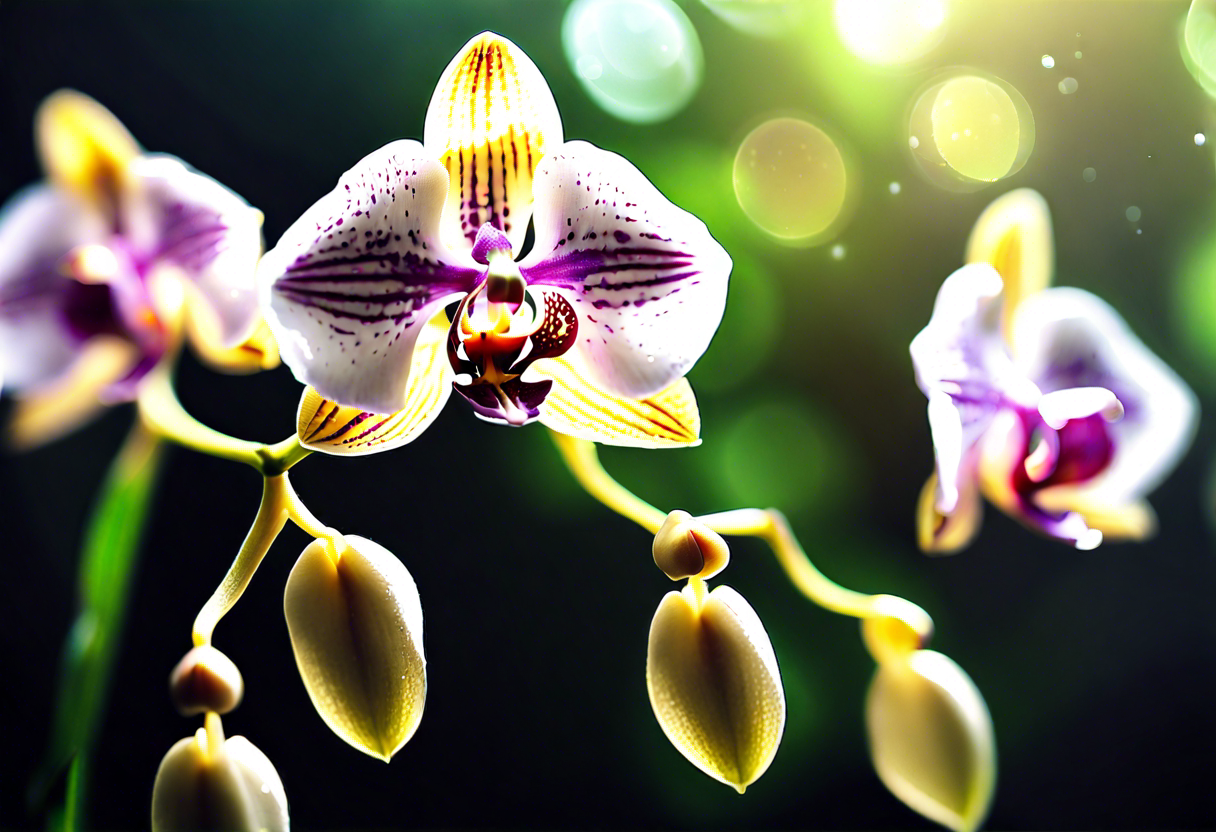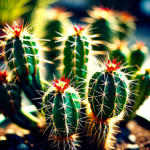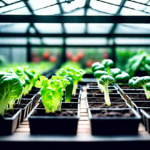The Different Types of Vanilla Orchid Plants
Vanilla orchid plants are known for their exquisite flowers and delightful fragrance. There are several types of vanilla orchids that can be grown, each with its unique characteristics and requirements. Here are some of the most popular types:
1. Vanilla planifolia: Also known as the Bourbon vanilla, Vanilla planifolia is the most commonly cultivated species for commercial vanilla production. It features thick, succulent leaves and produces long, greenish-yellow flowers. This variety requires a warm and humid climate to thrive.
2. Vanilla pompona: Native to Central and South America, Vanilla pompona is another popular variety. It has slightly smaller leaves compared to Vanilla planifolia and produces yellowish-green flowers. This species is known for its strong and sweet fragrance.
3. Vanilla tahitensis: As the name suggests, this variety is native to Tahiti. It has broader leaves than the other species and produces flowers that are light green or cream-colored. Vanilla tahitensis is known for its unique fruity and floral aroma.
4. Vanilla odorata: Native to the Caribbean and Central America, Vanilla odorata is a smaller species with thin, elongated leaves. It produces delicate white flowers that emit a sweet and delicate scent. This variety is well-suited for smaller indoor spaces.
5. Vanilla phaeantha: This species is found in Madagascar and produces striking white and pink flowers. It has slender leaves and requires high humidity and filtered sunlight to thrive. Vanilla phaeantha is valued for its intense floral fragrance.
It is essential to understand the specific requirements of each type of vanilla orchid plant in order to provide the best care and environment for their growth. Additionally, each variety offers a unique set of flavors and aromas when it comes to vanilla production, making them a fascinating choice for orchid enthusiasts and vanilla lovers alike.
The Ultimate Guide: How to Care for Vanilla Orchid Plants
Vanilla orchid plants are a stunning addition to any garden or indoor space with their unique beauty and enticing fragrance. While they may seem delicate and exotic, they can thrive with the right care and attention. In this guide, we will explore the essential steps to ensure your vanilla orchid plants thrive and bring joy to your home.
1. Light and Temperature
Vanilla orchid plants require bright, indirect light to grow and flower successfully. They thrive in temperatures between 70-80 degrees Fahrenheit during the day and slightly cooler temperatures, around 60-70 degrees Fahrenheit, at night. Avoid exposing them to direct sunlight, as it can scorch their leaves.
2. Humidity and Watering
These tropical beauties enjoy high humidity levels. Mist the leaves regularly to replicate their natural habitat. When it comes to watering, ensure the potting medium is well-drained but consistently moist. Avoid overwatering or allowing the plant to sit in standing water, as this can lead to root rot. A good rule of thumb is to water when the top inch of soil feels dry.
3. Potting Medium and Container
Choosing the right potting medium is crucial for the health of your vanilla orchid plants. Orchid bark, sphagnum moss, or a mix of the two is ideal. Ensure the container has excellent drainage and is slightly larger than the root system to allow for growth. Repotting is typically done every two to three years when the plant outgrows its current container.
4. Air Circulation and Fertilizer
Air circulation is vital for vanilla orchid plants, as it helps prevent pests and diseases. Ensure the plant is not crowded and has adequate space to breathe. When it comes to fertilization, use a balanced orchid fertilizer at quarter strength every two to three weeks during the growing season. Avoid fertilizing during the plant’s dormant period.
5. Pruning and Supporting
Regular pruning is essential to maintain the shape and health of your vanilla orchid plant. Remove any dead or yellowing foliage, as well as spent flowers. To promote vertical growth, it is recommended to provide support or a trellis for the vines to climb.
6. Orchid Reproduction and Propagation
If you’re interested in expanding your collection of vanilla orchid plants, reproduction can be done through stem cuttings or air layering. However, it’s worth noting that vanilla orchids are primarily pollinated by hand in commercial cultivation, as their natural pollinator is only found in certain regions of Mexico.
By following these care tips, you can ensure the health and longevity of your vanilla orchid plants. With patience and diligence, you’ll be rewarded with their exquisite blooms and the delicate aroma that fills the air.
The Factors to Consider When Growing Vanilla Orchid Plants Indoors
Growing vanilla orchid plants indoors can be a rewarding and fulfilling experience. However, there are several factors that need to be considered to ensure the success of your plants. From lighting and temperature requirements to proper watering and fertilization, here are the key factors you should keep in mind when cultivating vanilla orchids indoors.
Lighting: Vanilla orchids thrive in bright but indirect light. Place them near a window where they can receive filtered sunlight for approximately six to eight hours a day. Avoid direct sunlight, as it can scorch the leaves of the plant.
Temperature: Vanilla orchids prefer a warm and humid environment. The ideal temperature range for these plants is between 70 to 80°F (21 to 27°C) during the day and around 60 to 70°F (15 to 21°C) at night. It’s crucial to provide consistent temperatures to promote healthy growth.
Air Circulation: Good air circulation is essential for vanilla orchids. They require gentle air movement to prevent stagnant air, which can lead to fungal diseases. Using a small fan in the room or providing a gentle breeze from an open window can help maintain proper air circulation.
Humidity: Vanilla orchids thrive in high humidity levels. Aim for a humidity range of 60% to 80% to create a tropical environment for your plants. You can increase humidity by placing a humidity tray filled with water near the orchids or by using a humidifier.
Watering: Vanilla orchids prefer a consistent level of moisture. Water the plants thoroughly when the top inch of the potting mix feels dry. Avoid overwatering, as it can lead to root rot. It’s important to keep the potting mix evenly moist but not waterlogged.
Fertilization: Vanilla orchids have specific fertilization needs. Use a balanced orchid fertilizer with a ratio of 20-20-20 or an orchid-specific fertilizer formulated for epiphytic plants. Apply the fertilizer at half-strength every two weeks during the growing season, and reduce or suspend fertilization during the plant’s dormant period.
Support: Vanilla orchid vines can grow quite long and require support. Use a sturdy trellis or provide a moss-covered pole for the vines to climb on. Regularly train and tie the vines as they grow to ensure proper support and stability.
Potting Mix: Vanilla orchids prefer a loose, well-draining potting mix. An ideal mix consists of orchid bark, sphagnum moss, and perlite or vermiculite. Avoid using regular potting soil, as it retains too much moisture and can suffocate the plant’s roots.
By considering these factors and providing your vanilla orchid plants with the proper care, you can enjoy the beauty and fragrance of these exquisite tropical plants in the comfort of your own home. Remember to observe your plants closely and make adjustments as needed to ensure their overall health and vitality. Happy growing!
Common Problems and Solutions for Vanilla Orchid Plants
Vanilla orchid plants are known for their delicate and exotic beauty. However, like any other plant, they can face certain problems that can hinder their growth and development. It is important to identify these issues early on and implement appropriate solutions to ensure the well-being of your vanilla orchid plants. In this article, we will discuss some common problems that vanilla orchid plants may encounter and provide effective solutions to address them.
1. Lack of Proper Air Circulation: Vanilla orchid plants require good air circulation to thrive. Insufficient airflow can lead to the growth of fungi and pests, which can damage the plant. To solve this problem, ensure that your orchid is placed in a well-ventilated area. Use fans or open windows to promote air movement around the plant.
2. Inadequate Light: Vanilla orchids need bright but indirect light to grow and bloom. Insufficient light may result in weak growth and a lack of flowers. To resolve this issue, place your orchid near a window that provides bright, filtered light. Avoid direct sunlight as it can scorch the leaves.
3. Improper Watering: Overwatering or underwatering can both be detrimental to vanilla orchid plants. Overwatering can lead to root rot, while underwatering can cause dehydration and stunted growth. To avoid these problems, water your orchid when the top inch of the soil feels dry. Ensure proper drainage to prevent water from stagnating in the pot.
4. Nutrient Deficiencies: Vanilla orchid plants require specific nutrients to thrive. A lack of essential nutrients can result in yellowing leaves, stunted growth, and overall poor health. To address this issue, use a balanced orchid fertilizer formulated specifically for vanilla orchids. Follow the instructions on the fertilizer package to ensure proper application.
5. Pest Infestation: Vanilla orchids can be susceptible to pests such as mealybugs, aphids, and spider mites. These pests can cause damage to the leaves and flowers, affecting the overall health of the plant. To eliminate pests, use organic insecticides or insecticidal soaps. Regularly inspect your orchid plants for signs of infestation and take timely action.
6. Improper Temperature and Humidity: Vanilla orchid plants thrive in warm and humid conditions. Extreme temperatures and low humidity can negatively impact their growth. To create a suitable environment, maintain a temperature range of 60-80°F (15-27°C) and humidity levels between 60-70%. Use a humidifier or place a tray with water near the orchid to increase humidity.
7. Lack of Support for Climbing: Vanilla orchids are epiphytic plants that naturally climb on tree trunks in the wild. Without proper support, their growth may become stunted. To provide support, use stakes, trellises, or moss-covered poles. Gently tie the orchid’s aerial roots to the support structure to aid its upward growth.
By being aware of these common problems and implementing the suggested solutions, you can ensure the health and vitality of your vanilla orchid plants. Regular care, monitoring, and attention will go a long way in cultivating these exquisite and fragrant orchids in your own indoor garden.
Harvesting and Utilizing Vanilla from Orchid Plants
Vanilla orchid plants are not only admired for their beautiful flowers but also for the flavorful and aromatic spice that can be harvested from them. The process of harvesting and utilizing vanilla from these plants requires patience and attention to detail. In this article, we will explore the steps involved in extracting and using vanilla from orchid plants.
1. Patience is Key
Harvesting vanilla from orchid plants is a labor-intensive process that requires patience. Once the flowers of the vanilla orchid have bloomed, they must be manually pollinated to set fruit. This process can take several months, and the fruits will gradually mature and turn brown. It is crucial to allow the fruits to fully ripen on the plant before harvesting to ensure the best flavor.
2. Hand-Pollination
Vanilla orchid plants have a unique method of pollination. In their natural habitat, they rely on specific bees and insects for pollination. However, when cultivated, hand-pollination is necessary to ensure a successful harvest. This involves carefully transferring pollen from the male part of the flower (stamen) to the female part (stigma). This process must be repeated for each flower on the plant, making it a time-consuming task.
3. Harvesting and Fermenting
Once the vanilla pods have fully ripened, they can be harvested. This is typically done by hand, using a sharp knife or scissors to carefully cut the mature pods from the plant. After harvest, the vanilla pods are subjected to a process called fermentation. Fermentation helps develop the characteristic aroma and flavor of vanilla by breaking down compounds within the pods. The pods are placed in a warm, dark, and well-ventilated area for several months to undergo this transformation.
4. Drying and Curing
After fermentation, the vanilla pods are carefully washed to remove any remaining residue and dirt. They are then dried to reduce moisture content. The drying process can take several weeks and is typically performed under controlled conditions to maintain the quality of the pods. Once thoroughly dried, the vanilla pods are ready for further processing or storage.
5. Utilizing Vanilla
The harvested and cured vanilla pods can be used in various culinary applications. To utilize the flavor of vanilla, the pods are typically split open, and the tiny seeds inside are scraped out. These seeds contain the intense flavor that is associated with vanilla. They can be added to both sweet and savory dishes, such as desserts, beverages, sauces, and even marinades. Additionally, the empty vanilla pods can be used to infuse sugar, vodka, or other liquids to create flavored extracts.
Harvesting and utilizing vanilla from orchid plants is a meticulous process that requires time, effort, and attention to detail. From the hand-pollination of flowers to the fermentation and drying of the pods, each step contributes to the rich flavor and aroma associated with vanilla. Whether used in baking or cooking, vanilla derived from orchid plants adds a delightful touch to various culinary creations. So, if you have the opportunity to grow vanilla orchid plants, embrace the adventure of harvesting and savoring your own homemade vanilla.
Conclusion
Vanilla orchid plants are a fascinating addition to any indoor garden. With their delicate, fragrant flowers and unique fruit, these plants provide both aesthetic beauty and culinary versatility. There are several different types of vanilla orchids, each with its own specific growth requirements and characteristics. By understanding the needs of these plants and providing the necessary care, gardeners can successfully cultivate vanilla orchids in their homes.
When caring for vanilla orchid plants, it is important to consider factors such as light, temperature, humidity, and watering. These plants thrive in bright, indirect sunlight and temperatures between 60 and 80 degrees Fahrenheit. Maintaining high humidity levels through techniques such as misting and using a humidifier is beneficial for their growth. Proper watering is crucial, as overwatering can lead to root rot and other issues. Use a well-draining potting medium and water when the top inch of soil feels dry to the touch.
Growing vanilla orchid plants indoors requires attention to certain factors. Firstly, a suitable growing environment needs to be created. This includes providing the plants with sufficient space for their aerial roots to grow, as well as a support structure like a trellis or moss pole. Additionally, establishing a consistent and appropriate watering and fertilizing schedule is vital for their health. The use of a balanced orchid fertilizer and regular misting can help replicate the natural conditions these plants thrive in.
While vanilla orchid plants are generally resilient, they can encounter some common problems. These issues include pests such as spider mites and aphids, as well as diseases like fungal infections and bacterial rots. However, with proper monitoring and timely intervention, these problems can be mitigated. Using natural pest control methods like neem oil and maintaining good air circulation can help prevent infestations. Additionally, keeping the plants clean and providing adequate drainage can reduce the risk of diseases.
One of the most rewarding aspects of growing vanilla orchid plants is the eventual harvest of vanilla pods. After the plant blooms, it must be hand-pollinated to encourage fruit development. The pods take several months to mature and turn dark brown. Once harvested, they can be used in various culinary endeavors, such as flavoring desserts, making extracts, or infusing beverages. The rich, aromatic flavor of vanilla adds depth and complexity to a wide range of recipes, making it a highly prized ingredient.
Vanilla orchid plants are a captivating addition to any indoor garden. By understanding their specific care requirements, providing the right growing conditions, and addressing potential problems, gardeners can enjoy the beauty of these plants as well as the satisfaction of harvesting and using their own homegrown vanilla. So, whether you are an experienced gardener or a beginner, consider adding vanilla orchid plants to your collection for a delightful and fragrant experience.


